Posts Tagged: pomegranate
Time to 'Bee' Thankful
It's Thanksgiving Day, and as we sit down with family and friends to count our blessings,...
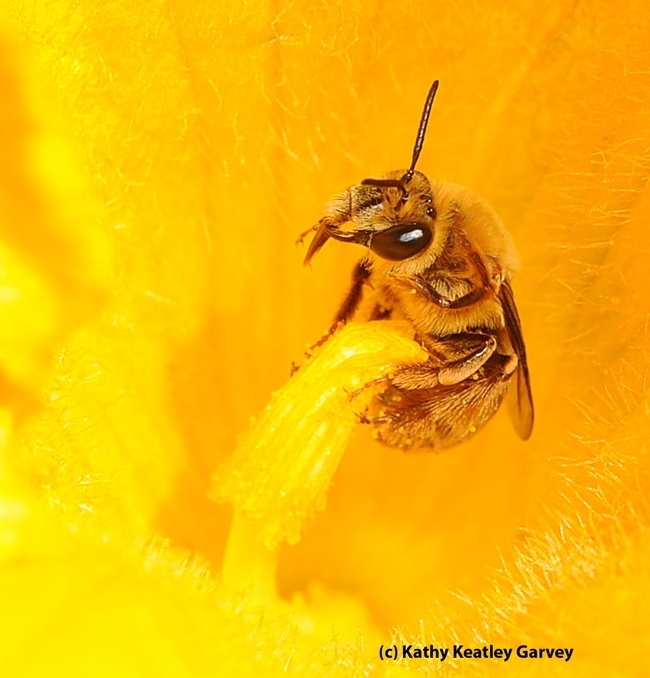
A squash bee, Peponapis pruinosa, pollinating a squash blossom. (Photo by Kathy Keatley Garvey)
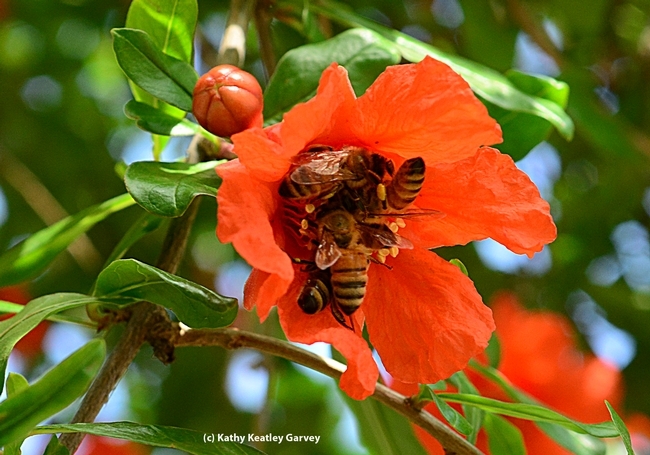
Five honey bees offering their pollination services on a pomegranate blossom. (Photo by Kathy Keatley Garvey)
May the Fourth Be With You
"The Redcoats are coming! The Redcoats are coming!" So shouted American Revolutionary patriot Paul...
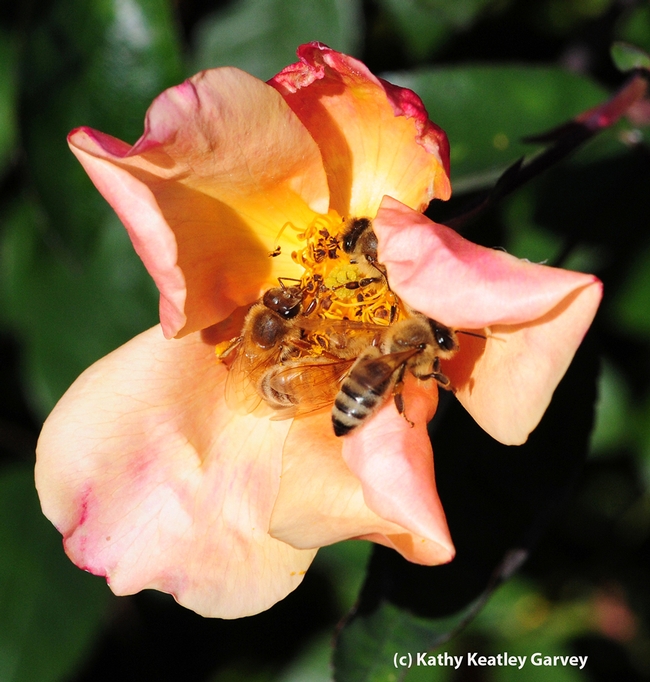
May the Fourth Be With You: Four honey bees share a rose blossom. (Photo by Kathy Keatley Garvey)
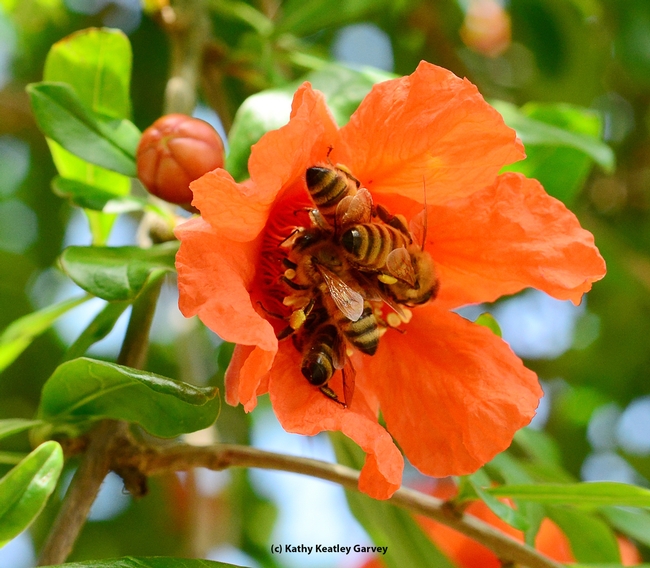
May the Fourth Be With You: Four honey bees share a pomegranate blossom. (Photo by Kathy Keatley Garvey)
The Taste of Honey--Pomegranate Honey
Last spring you may have seen honey bees pollinating the showy pomegranate blossoms. The ancient...
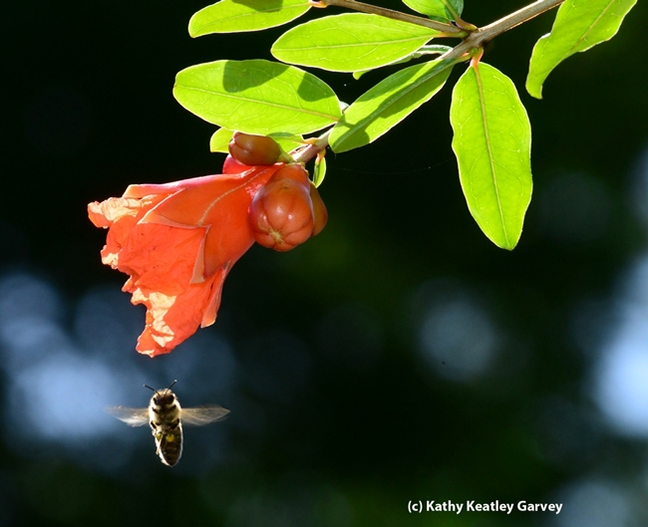
A honey bee heads toward a pomegranate blossom. (Photo by Kathy Keatley Garvey)
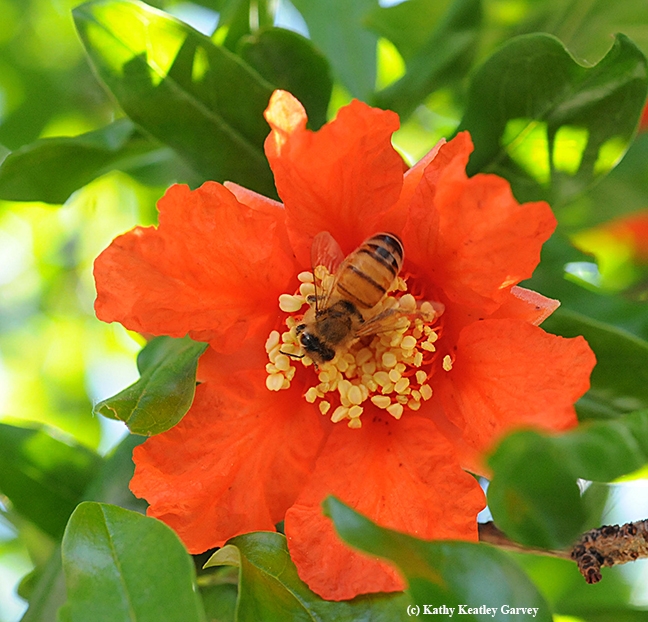
A honey bee pollinating a pomegranate blossom. (Photo by Kathy Keatley Garvey)
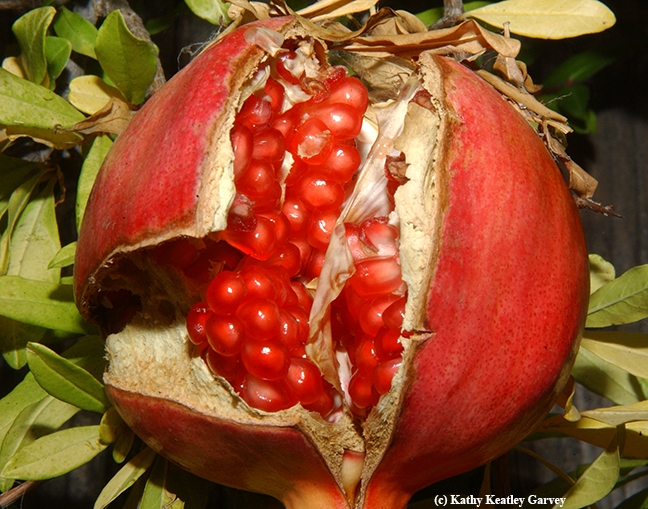
This is what the bees did! A mature pomegranate full of ruby red seeds. (Photo by Kathy Keatley Garvey)
If you are interested in growing pomegranates while maximizing water and nitrogen use efficiency, you may want to register for a meeting that will be held at Kearney on October 2, 2014.
Individuals interested in growing pomegranates with surface or subsurface drip irrigation are invited to attend a meeting at Kearney Agricultural Research & Extension Center (KARE) on October 2, 2014, to learn about improving pomegranate fertigation and nitrogen use efficiency. To attend, a reservation made with Diana Nix at 559-46-6500, extension 0, is required.
The field day will share the results of a fertigation study at KARE that uses high frequency drip and subsurface drip irrigation/fertigation systems. Check in is at 9:30 am, presentations start at 10:00 am, and the tour of the research plot begins at 11:00 am. The meeting will adjourn at noon.
The agenda includes:
- Introduction, objectives, orchard configuration and operation
- Evapotranspiration, crop coefficient and lysimeter management
- Yields, water use efficiency, and nitrogen use efficiency
- Soil matric potential measurements and hydraulic gradient calculations in the subsurface drip irrigated lysimeter
- Tissue responses to high frequency injected nitrogen at three levels of nitrogen
- Canopy cover and leaf chlorophyll measurements
- Conclusions and questions
For additional information, please contact Kevin R. Day, UC Cooperative Extension advisor in Tulare County, specializing in fresh-shipping deciduous tree fruits, cultural practices and production, fruit growth and development, pruning and training systems, at 559-684-3311, or Claude J. Phene, President of SDI Plus, at 559-298-0201.

Freshly harvested pomegranates in a bin.
Where the Bees Are
Do you now where the bees are? On Thursday, May 8 let's all step outside for three minutes...

Honey bees clustering on pomegranate blossom. (Photo by Kathy Keatley Garvey)